
Five star advice: Insider tips for dealing with software review sites
Main illustration: Jia-yi Liu
Online marketing content has long been dominated by brands creating product descriptions, how-to guides, branded articles, and blog posts to promote their business.
While content creation is still an integral part of digital marketing, potential prospects are increasingly interested in seeing what independent sources have to say about your product.
That is why peer-to-peer content is on the rise. Some 84% of people trust online reviews as much as a personal recommendations, reason enough why every business should be concerned with who reviews their product and what they have to say about it.
What do we mean by the term “review sites”?
Not all review sites are made equal. This is true not only in terms of the legitimacy and quality of a review site but also in terms of the types of review sites that exist. Today, the phrase “review site” has really become a bit of an umbrella term, incorporating two very different forms of review-based content:
1. Peer review sites
These are sites such as Trustpilot, Reviews.io, G2 Crowd, Capterra and Yelp, which encourage real-world users to share their experiences with brands and create content based on their own brand encounters.
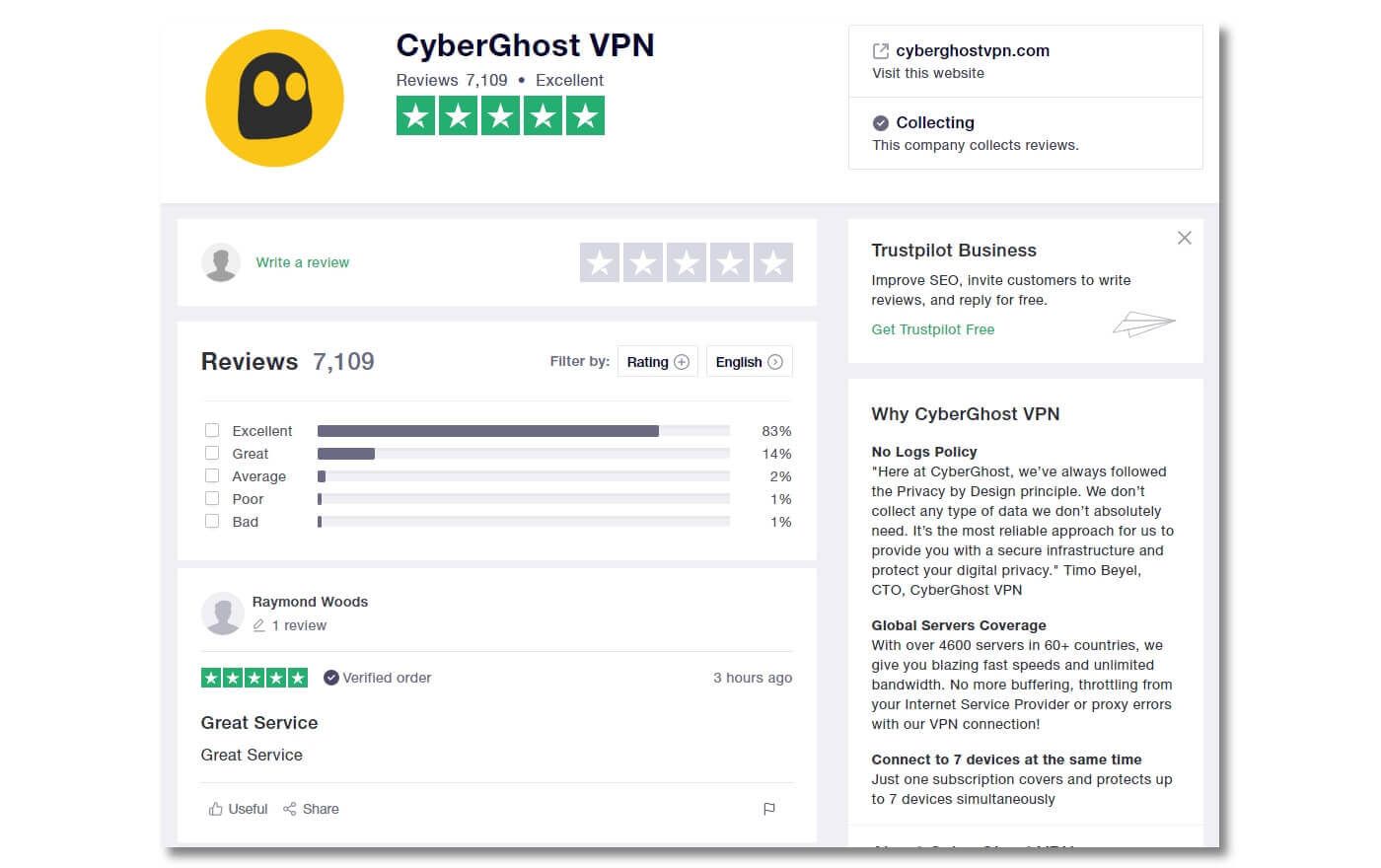
Trustpilot, a consumer review site
2. Influencer review sites
These include traditional editorial review sites such as Techradar and PCMag, which often review both software and tech gadgets. In this same category, there are also review sites with a narrower focus like FitSmallBusiness (small business software) and ultra-niche ones like EmailToolTester that only focus on one software segment (email marketing software).
These sites have dedicated expert editors who rate and review the products. Typically these influencer review sites rank very well in Google as they heavily optimize their reviews for SEO.
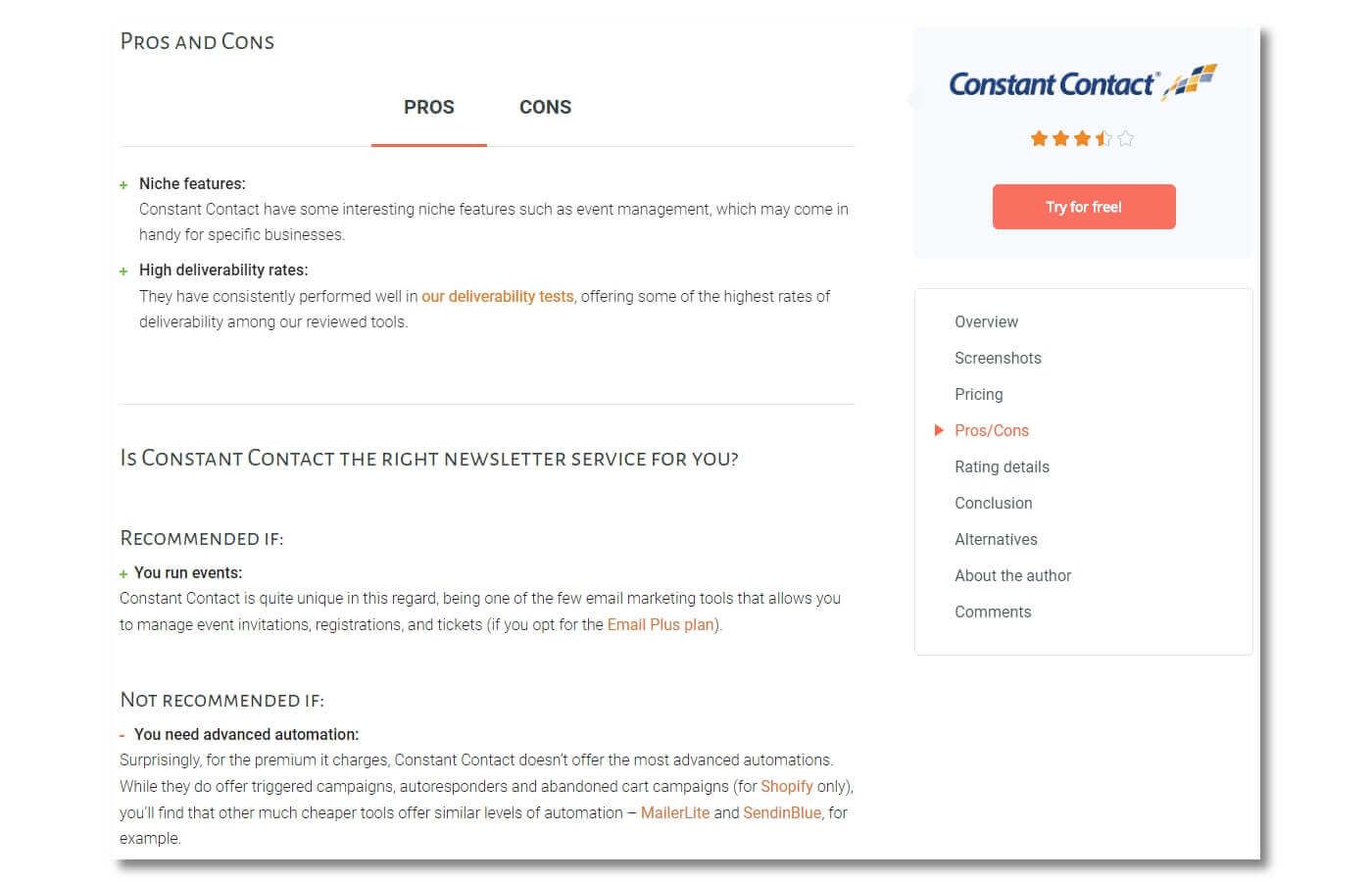
EmailToolTester, an influencer review site
Influencer review sites are what we’re going to focus on in this article. At a time when around 50% of all customers claim that influencer marketing impacts purchasing decisions, finding and working with these review sites can be an effective way to boost downloads and sales of your software.
Benefits of getting featured on influencer review sites
Of course, getting featured on a consumer review site is the easier of the options. It’s completely organic, with users deciding to share their thoughts based on their positive or negative experiences. The customer essentially does all the hard work, but the problem with consumer review sites is that brands have little control over the type of content that’s published.
Now, we are not trying to say that brands should have such control. However, not all user reviews exhibit perfect objectivity, to say the least, and a disproportionate number reviewers can be motivated purely by a negative experience. The scary thing is that negative reviews can drive away 40% of your potential customers.
“One way to combat the uncertainty of user reviews is to make sure your product is featured on prominent influencer review sites”
Besides actually offering a decent solution, one way to combat the uncertainty of user reviews is to make sure your product is featured on prominent influencer review sites. There is certainly more effort involved in getting featured on influencer sites, but that comes with a multitude of perks that make it worthwhile.
First of all, consider the fact that 90% of people read online reviews before making a purchase. If those reviews come from a highly trusted source, they can actually be a great deal more influential than user-generated content. In addition, change-related anxiety and uncertainty are reported as being two of the key aspects standing in the way of product adoption – something positive reviews can help to alleviate.
Here are other major benefits of being featured on influencer review sites:
- Greater exposure and reach. When a review is published by an influencer, the brand receives automatic access to a fully-established follower base, unlocking a greater audience pool than they may be able to generate themselves.
- Building additional trust in your brand. An influencer review site essentially validates (or disproves) what a brand has been saying, providing consumers with peace of mind that they are making the right choice.
- Valuable referral traffic. Popular influencer review sites are always a good source of referral traffic and many of them are open to signing up for your affiliate programs which can be a great source of qualified leads for your business and a powerful customer acquisition strategy.
- Help entering a new market. Review sites can be a great partner if you are entering a new market. For example, WebsiteToolTester is available in seven languages (DE, EN, FR, ES, IT, Nl & PT). If you are trying to get your site builder into a new country (e.g. Portuguese-speaking countries), getting us to review your tool can give you a nice boost from the first minute.
How to find relevant software review sites
There are a few different ways to find sites worth being featured on. We will discuss the 2 most common ones below.
1. Just “Google it”
Let’s imagine you have a project management tool. To find potential sites, you could search for the following terms:
- Project management tools
- Best project management tools
- Project management software review
- “Competitor name” + review
Those and similar terms will almost always give you a few influencer review sites on the first page that are worth checking out.
For instance, here is what you get if you search for “Trello review”.
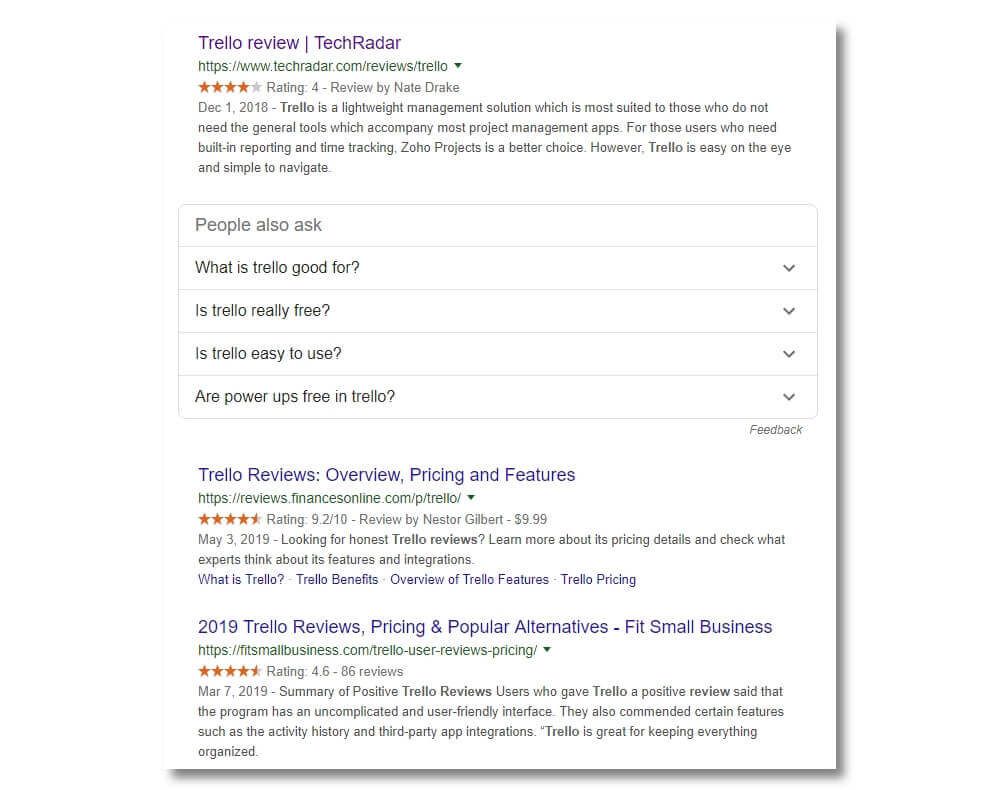
Results for a Google search for Trello
If Trello was one of your competitors, these are some of the sites you most likely would want to be featured on too.
2. Conduct a competitor analysis
Competitor analysis is used in many aspects of business operations, including SEO, pricing, and product innovation, yet it’s something that’s often overlooked in terms of reviews and influencer marketing. The process involves checking out which sites your competitors are featured on.
This can be done by looking at a competitor’s backlink profile and seeing which sites are linking to them. You can do that using tools like Ahrefs or Semrush. To narrow down your search, you can only look at the backlink profile for your competitor’s homepage as most tool reviews will include a link to it (only in rare cases to some feature page).
3. Search for review sites in general
This is where things turn a little meta … you’ll need to look for review sites for review sites! Conduct a search for “Top 10 review websites” and so on. Remember to focus on your niche (you may want to look for “Top B2B software review websites”, for example), and check if the site reviews the right sort of software and plugins.
How to select the worthy review sites
Not every software review site you find is worth reaching out to. There is a very definite need for evaluation because, as discussed earlier, not all review sites were created equal. Here is a four-part checklist for determining whether a software review site is right for you:
- Are the featured reviews honest? Check if the existing reviews include both positive and negative aspects. If the “cons” section of a review is empty or severely downplayed (e.g. “It lacks this feature, which you don’t really need because…”, “It’s quite pricey, but it has this cool feature…”), it may suggest the site publishes fake reviews in exchange for money. If you look at our review of the best website builders, for example, you will quickly notice that there are very clear positives and negatives that are discussed for each reviewed site builder – which is how all honest reviews should look like.
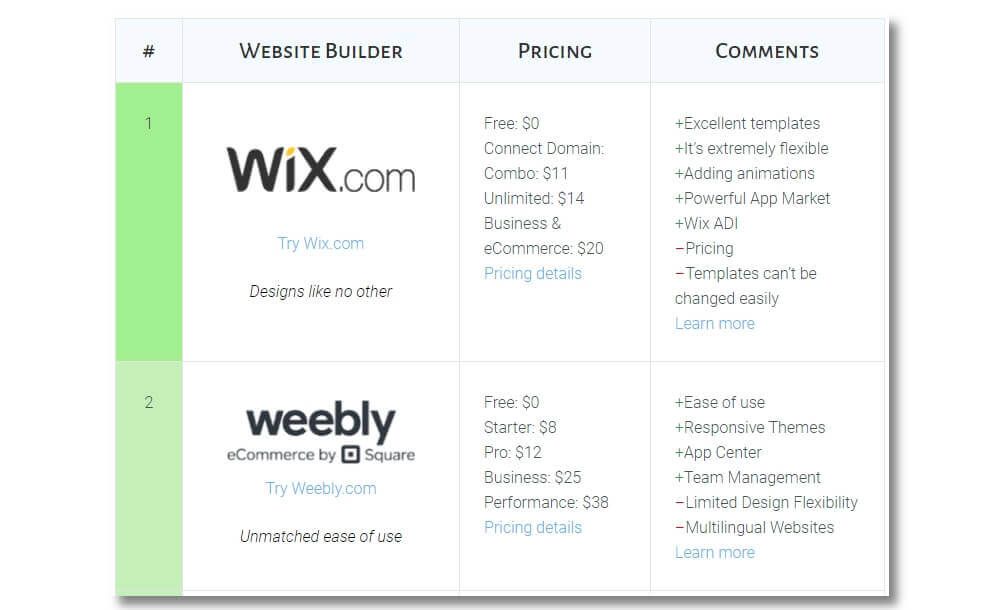
Example of an objective review
- Is it what you expect? As a software developer or owner, you already have a pretty good idea of who the big names in your particular niche are. Check is being reviewed on the site and look to see if some very obvious choices are excluded, or if some highly unusual choices are included.
- How much traffic do they generate? If you are a big business, it is often not worth engaging with review sites whose reviews do not really generate much traffic. The cut-off point is something you should decide on a case to case basis.
- What is happening in the comment section? Do you know the easiest way to spot biased reviews? A bunch of angry comments that complain about missing features or blatantly stating disadvantages that the reviewer conveniently “forgot” to include. If someone doesn’t want to deal with that kind of backlash, the easiest way is to disable the commenting function or only publish positive ones.
- Do the reviewers disclose how they make money? A “good” review site should be open and honest about how they make money. While a review site can feature affiliate links and still be objective, the issue is when they start forcefully pushing and promoting products they have a connection with. Probably the most worrying paid result I ever clicked on led me to a ranking table for site builders that changed its ranking when I refreshed the page. I guess I was witnessing a live A/B test.
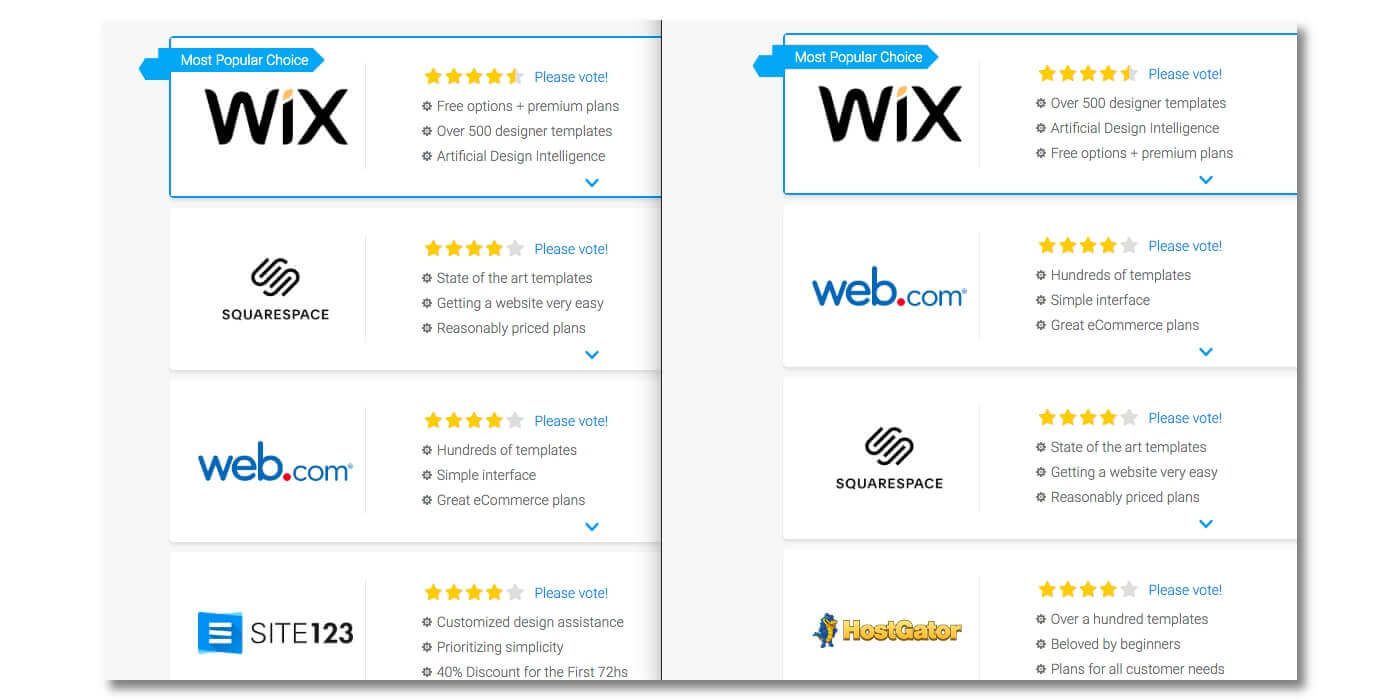
Ranking table split test
How to collaborate with great review sites
After you find review sites you want to collaborate with, you need to think about how to approach them.
The most important thing to remember here is that not all review sites will be open to collaboration. In fact, some prefer to find tools to review organically. However, many will be open to reading pitches, so to improve your chances of being selected for review, it is important to approach them the right way.
Here are some tips to ensure you start the relationship on the right foot.
Check for submission guidelines
Some software review sites have application forms you can use to submit your product as a potential addition to their lists. So that is the first thing you should look for.
If you can’t find it, the next thing you should search for is their submission guidelines, which is just a more complex version of the application form as it involves more steps.
If neither is available, you will need to find the relevant contact (ideally the content manager or editor) and reach out.
Take time to personalize your message
Research the reviewer and the site and tailor your approach for each prospect. Personalization is an important part of every email if you want to be taken seriously. Tell the reviewers why you want to be featured, and why do you think your tool would be a good addition to their list (a perfect place to mention if your product can do something unique).
Offer them a test account
Reputable review sites will always look to extensively test your product because that is the only way to give valid reviews. In most cases, it is in your best interest to give them a test account with full access to all of your features. This is a good way to develop strong partnerships from the get go.
Mention your affiliate program (if you have one)
Most review sites are funded by affiliate commissions. So if you can offer them an affiliate partnership, it will definitely increase your chances of being selected for a review (unless you already have a strong brand that they simply cannot ignore).
Be ready to answer some questions
It is not rare that the reviewers will have some questions for you during the testing process. They might want to know why a certain feature works in a certain way, what can happen in some specific situations, do you offer some kind of custom pricing options, and anything else they were not able to test or confirm themselves.
You should be prepared to answer those questions in a timely manner as it is in everyone’s best interest that the published information is accurate.
Post-review actions
A common mistake that many businesses make when working with reviewers is to focus only on making connections and getting published… and not giving enough thought to maintaining the relationship.
The first thing you should do after the review is published is check if all mentioned information is correct (and up-do-date if there was a longer review process).
“In a post-review world, it’s not all about keeping up with reviewers – it’s about bringing your audience along for the ride”
It’s also a good idea to keep a contact list for all sites your software has been featured on, making it easy to contact reviewers as necessary with new updates, features, and changes to keep everything up-to-date. If you want to take it a step further, you can notify the reviewers ahead of time about a major feature you are working on so they have enough time to schedule in a quick update. Speaking from personal experience, we appreciate this a lot.
But in a post-review world, it’s not all about keeping up with reviewers – it’s about bringing your audience along for the ride. The truth is that influencer review sites perhaps wouldn’t be as popular or as trusted sources today if they weren’t complemented by consumers who chime in with their opinions, questions, and experiences.
Once you’ve been featured, encourage your users to leave their own reviews and join the discussion, be it by jumping into the comment section or by writing their own review. This is a great way to further validate your information and expand on the review sources you’re able to offer.
It’s worth the effort
Finding and working with the best software review sites isn’t always easy, and it definitely involves some long-term effort in order to achieve success. However, the benefits that come along with being featured on the right review sites make this a smart time investment.
About the author
Robert Brandl is the founder and owner of WebsiteToolTester.com. As someone who’s also self-employed, he’s passionate about getting right-fit tools into the hands of entrepreneurs and freelancers so that they may effectively take their businesses to new heights.






